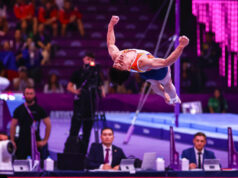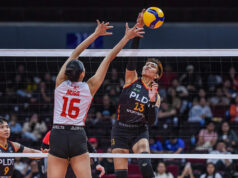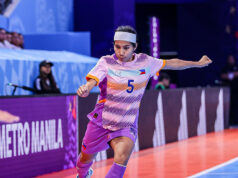7th Sinquefield Cup 2019
Saint Louis, Missouri, USA
Aug. 15–30, 2019
Final Standings (GMs all)
1–2. Ding Liren CHN 2805, Magnus Carlsen NOR 2882, 6.5/11
3–4. Viswanathan Anand IND 2756, Sergey Karjakin RUS 2750, 6.0/11
5–8. Shakhriyar Mamedyarov AZE 2764, Anish Giri NED 2779, Fabiano Caruana USA 2818, Ian Nepomniachtchi RUS 2774, 5.5/11
9–10. Hikaru Nakamura USA 2743, Maxime Vachier-Lagrave FRA 2778, 5.0/11
11–12 Levon Aronian ARM 2765, Wesley So USA 2776, 4.5/11
Average ELO 2783 Category 22
Time Control: 130 minutes for the entire game with 30 seconds delay before clock starts on every move starting move 1
The 7th Sinquefield Cup had only 12 decisive results out of 66 games — less than 20%. In fact, there were 4 rounds which had 100% draws. What went wrong?
Was it the time control? I don’t think so. There was no extra time given after the first 40 moves, after which instead of an increment they only had a time delay, 30 seconds allowance before your clock starts — if you execute your move before the 30 seconds is exhausted this is not added to your time. This rule does not give the players enough thinking time come the endgame, and the players HAD to go into the endgame as no draw offers were allowed. This caused many players to blunder, a prime example being Wesley So losing to Nepomniachtchi despite being the aggressor in the middlegame and early endgame. As the game wore on and they reached the 100th move Wesley was just exhausted from continuously needing to make his move before 30 seconds and collapsed.
By the way, the loss to Nepo ruined the tournament for Wesley and the next day he lost again to Magnus Carlsen with another glaring blunder — his only two losses of the event.
I think the draws were caused by tiredness. You see this year, in addition to the traditional tournaments and the Grand Chess Tour there was also the FIDE Grand Prix tournaments and this resulted in a jam-packed calendar. Just a listing of the events starting May this year involving the top 10 players:
May 8–12: Grand Chess Tour: Ivory Coast Rapid & Blitz
May 16-30: FIDE Grand Prix (Moscow). 16 players play 2-game matches until 1 is left standing
May 26–27: Lindores Abbey Chess Stars Tournament
June 3–14: Altibox Norway Chess. This is the tournament where in the case of a drawn classical game you have to play an additional, armageddon game to guarantee a decisive result.
June 26–July 7: Grand Chess Tour Croatia
July 11th–25th: FIDE Grand Prix Leg 2 (Riga, Latvia). Another 16-player knockout tournament.
July 27th–August 1st: Paris Rapid & Blitz (Paris, France)
August 10th–August 14th: St. Louis Rapid & Blitz (St. Louis, USA)
August 17th-August 28th: Sinquefield Cup (St. Louis, USA)
Oh! And don’t forget — the FIDE World Cup which will qualify two players to the Candidates tournament will start on Sept. 10 in Khanty-Mansiysk. Oct. 10–21 is the FIDE Chess.com Grand Swiss to be held in the Isle of Man which can also qualify you for the Candidates’. A very busy tournament schedule indeed!
So why am I complaining? The more events the merrier right? Maybe we just need a bit of scheduling sanity. The second half of the year is always chock-full of FIDE qualifying events and competitions. I hope the organizers could get together and map out their events over an entire year rather than for the last six months.
To quote Wesley from a recent event: “People seem to think that strong players can and should win whenever they want. My guess is the people who think that have never played the best chess players in the world in a lengthy tournament. Everyone fights to the death and more often than not, a win or loss can hang on one single move.”
On a lighter side Ding Liren was asked before the Sinquefield Tournament to give some opening remarks. Here is what he said: “Chesswise I was very pleased with my performance, but since we have been abroad for so long and will stay here for another two weeks I’ve started to worry about the rice I brought here. I’m worried about is it enough?” That’s right — everybody is running out of everything — stamina, opening ideas, the will to fight to the end, and rice!
Nepomniachtchi accounted for half of the tournament’s total decisive games — six out of 12. Due to the tournament’s weird time control Nepo seemed to decide to play fast in every game and put pressure on his opponent’s time handling. This worked for a while and after 9 rounds (out of 11) he was in the lead with Ding. All good things come to an end though and the tiredness and fatigue crept in, causing him to lose his last two games, in both of which one-move blunders converted a draw into a loss.
The following is a typical win for him in Sinquefield.
Nepomniachtchi, Ian (2774) — Aronian, Levon (2765) [C54]
7th Sinquefield Cup 2019 Saint Louis USA (8), 25.08.2019
1.e4 e5 2.Nf3 Nc6 3.Bc4 Nf6 4.d3 Bc5 5.0–0 d6 6.c3 a6 7.Re1 Ba7 8.Bb3 0–0 9.h3 Re8 10.Nbd2 Be6 11.Ba4 b5 12.Bc2 h6 13.Nf1 d5 14.exd5 Bxd5 15.Ng3 .Nh7 16.a4 Nf8 17.b4 Ng6 18.Be3 Bxe3 19.fxe3 Qd7
This move is fully in line with his plan of attack: Ng6–h4 and then his queen moves to the long diagonal.
20.Nd2 Nce7 21.Nb3 Qc6 22.Qd2 Nh4 23.e4 Qg6 24.Kh2 Bc6 25.Nc5
Nepomniachtchi spent 6 minutes on this move — his longest think in a game where he was basically blitzing out all his moves. In contrast Aronian was taking his time at a steady pace of around 6–7 minutes per move.
25…f5 26.exf5 Nexf5 27.Nge4 Bd5 28.Re2 Rad8 29.Rf1 Nd6 30.Qe1?!
The next move doesn’t give anything away but if Nepo had given it more thought he would probably have seen 30.d4! which opens up the diagonal of his c2–bishop against the Black queen. 30…Kh8 (otherwise Nf6+ would win his queen) 31.Nf6 Qf7 32.axb5 axb5 33.dxe5 Nc4 34.Qf4 with a decisive advantage
30…Nhf5 31.a5!
Threatening the a6 pawn with his knight.
31…Rf8
Aronian decides to give up his hapless pawn on a6 hoping to cash in on his kingside offensive.
32.Ref2 Rf7 33.Rf3 h5 34.Nxa6 h4 35.Nac5 Rdf8
Now Nepomniachtchi’s plan is to exchange off all the pieces on the board and win with his passed pawn on the a-file.
36.Kg1 Qh6 37.Qc1 Ne3 38.Rxf7 Rxf7 39.Rxf7 Kxf7 40.Qe1 Nxc2 41.Qf2+ Ke8 42.Qxc2 Bxe4 43.Nxe4 Nxe4 44.dxe4 Qe3+ 45.Kf1 Qf4+?
Correct is 45…Kd7 to bring his king closer to the passed pawn.
46.Qf2 Qc1+ 47.Qe1 Qf4+ 48.Kg1 Kd8 49.Qf2 Qc1+ 50.Kh2 Qxc3 51.a6 Ke8
[51…Kc8? 52.Qf8+ and the king has to move away 52…Kd7 53.Qxg7+ Kc6 54.Qg6+ Kd7 55.a7 Qa3 56.Qf7+ Kc8 57.Qg8+ Kb7 58.Qb8+ the pawn queens]
52.Qxh4 Qa3 53.Qh5+ Kf8
Everything loses:
53…Ke7 54.Qxe5+ Kd8 55.Qd5+ Ke8 56.Qg8+ Kd7 57.Qxg7+ Ke6 58.Qg8+ Kf6 59.Qd8+;
53…Kd8 54.Qh8+ Kd7 55.Qxg7+ Ke6 56.Qg6+ Ke7 57.Qc6;
53…Kd7 54.Qf7+ Kd6 55.Qd5+ Ke7 56.Qxe5+ Kd8 57.Qd5+ Ke8 58.Qc6+
54.Qf3+ 1–0
The exchange of queens is forced and the passed a-pawn queens easily. When Aronian resigned he had 0.2 second left and Nepo had an hour and 15 minutes left.
How did Wesley So do? He just lost steam and dropped two of his last three games. Before that he was in the thick of the battle and tried hard to make an impact. Take a look at this fight with Caruana — Wesley had a nice attack but Fabiano kept finding only moves.
So, Wesley (2776) — Caruana, Fabiano (2818) [A20]
7th Sinquefield Cup 2019 Saint Louis USA (5.1), 21.08.2019
1.c4 e5 2.g3 Nf6 3.Bg2 c6 4.Nf3 e4 5.Nd4 Qb6
Caruana has played this line for Black many times so it could not have been a surprise for Wesley.
6.Nb3 a5 7.d3 a4 8.N3d2 Bc5!?
An attempt at an improvement. Caruana had previously almost exclusively played 8…d5 here.
9.0–0 e3!
[9…Bxf2+ 10.Rxf2 e3 does not work. After 11.Rxf6! exd2+ 12.Rf2 dxc1Q 13.Qxc1 material is equal but Black will miss his active bishop and knight]
10.fxe3 Bxe3+ 11.Kh1 Ng4 12.Ne4 0–0 13.Nbc3 d5 14.cxd5 Bxc1 15.Qxc1 Ne3 16.Rf3 Nxg2 17.Kxg2 Qd8 18.Qg5!
Wesley is now the attacker. Black cannot afford to exchange queens because white is a pawn up with very active pieces and his own pieces are all on the back rank.
18…f6 <D>
POSITION AFTER 18…F6
19.Nxf6+! Rxf6 20.Ne4 Nd7!
The only move. 20…Rf8 21.Raf1! Nd7 (21…Qxg5?? 22.Rxf8#) 22.Rxf8+ Nxf8 23.Qxd8 Bh3+ 24.Kxh3 Rxd8 25.dxc6 bxc6 26.Nc5 White is winning.
21.Raf1 Kh8!
Another only move. The “obvious” 21…h6 22.Nxf6+ Nxf6 23.Qg6 Qxd5 24.e4 Qh5 25.Qxh5 (25.Rxf6 Bh3+ is OK for Black according to Caruana.) 25…Nxh5 26.Rf8+ Kh7 27.e5 Nf6!? (relying on the tactical motif of …Bh3+ to win White’s rook on f8)( 28.e6! (28.R1xf6 gxf6 29.e6 Kg7 30.Rd8! probably also wins) 28…Nd5 29.Rd8 b6 30.Rff8 I don’t see how Black can save this.
22.Nxf6 Nxf6 23.e4 Bd7 24.Rxf6!? gxf6 25.Rxf6 Qe7 26.Qf4 Kg8 27.d6 Qg7 28.e5 Re8
A good alternative is 28…Rf8 29.Rxf8+ Qxf8 30.Qxa4 is also ok but White has 4 pawns for the piece and his center pawns are still intact. Caruana prefers to destroy Wesley’s center.
29.Qc4+ Kh8 30.Rf7 Qxe5 31.Rxd7 Qe2+ 32.Kh3 Qf1+ 33.Kh4 Qf6+ 34.Kh3 Qf1+ 35.Kh4 Qf6+ 36.Kh3 Qf1+ ½–½
A draw, but there is nothing fight less about it.
Bobby Ang is a founding member of the National Chess Federation of the Philippines (NCFP) and its first Executive Director. A Certified Public Accountant (CPA), he taught accounting in the University of Santo Tomas (UST) for 25 years and is currently Chief Audit Executive of the Equicom Group of Companies.



